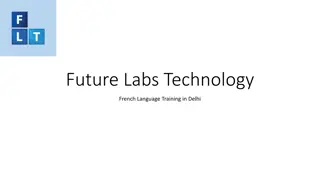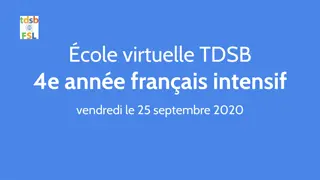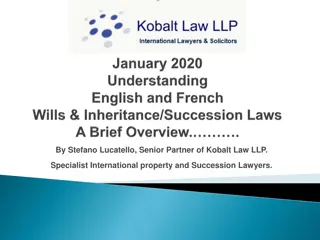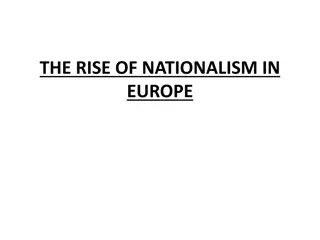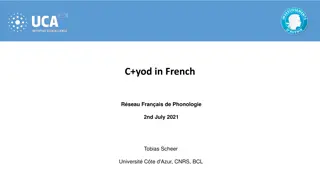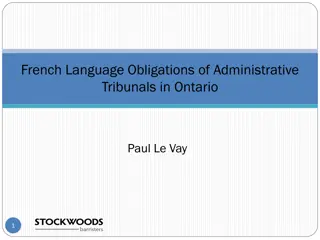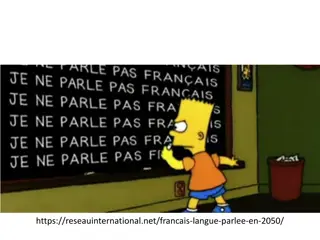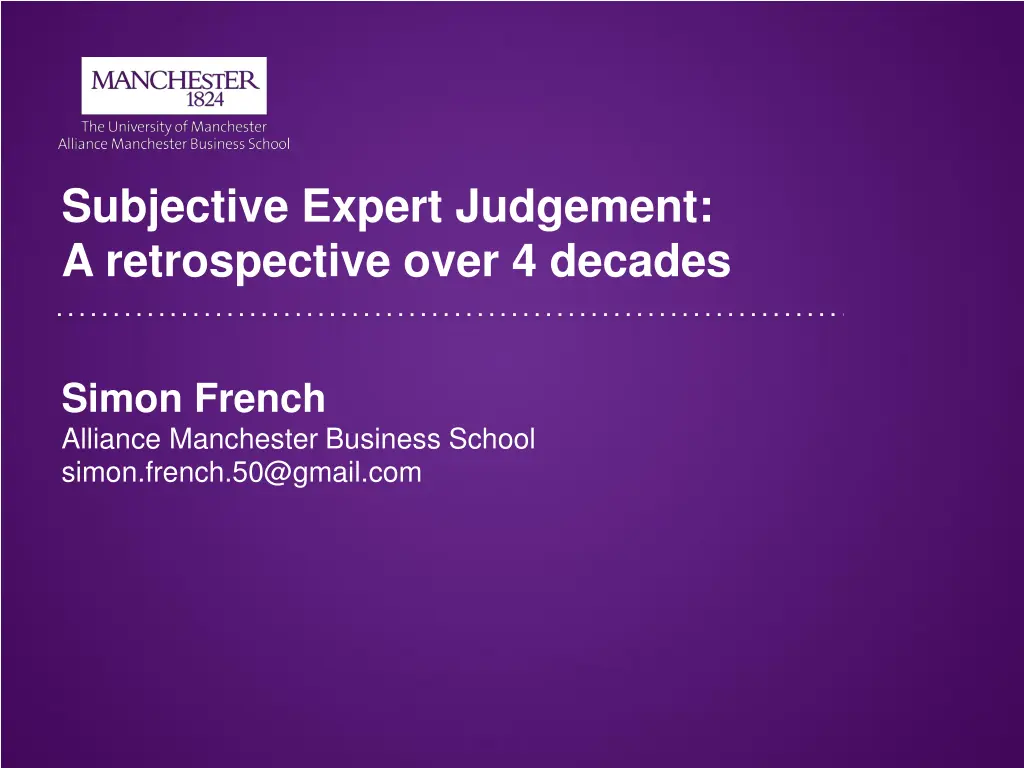
Retrospective Reflections on Subjective Expert Judgement
"Explore a retrospective view of Subjective Expert Judgement (SEJ) over four decades, incorporating insights on uncertainties and the amalgamation of multiple expert opinions. Delve into the foundations, Bayesian models, and SEJ elicitation methods pioneered by renowned experts like Lindley, Tversky, and Brown."
Download Presentation

Please find below an Image/Link to download the presentation.
The content on the website is provided AS IS for your information and personal use only. It may not be sold, licensed, or shared on other websites without obtaining consent from the author. If you encounter any issues during the download, it is possible that the publisher has removed the file from their server.
You are allowed to download the files provided on this website for personal or commercial use, subject to the condition that they are used lawfully. All files are the property of their respective owners.
The content on the website is provided AS IS for your information and personal use only. It may not be sold, licensed, or shared on other websites without obtaining consent from the author.
E N D
Presentation Transcript
Subjective Expert Judgement: A retrospective over 4 decades Simon French Alliance Manchester Business School simon.french.50@gmail.com
Agenda Reflections on Subjective Expert Judgement (SEJ) of uncertainties, particularly the combination of the judgements of several experts. 1. 2. Beginnings Lindley, Tversky and Brown Dependence of Experts and Decision-Makers Three Problem Types The Classical Model: the Early Years Applications Bayesian Models SEJ Elicitation and Modelling: a research agenda 3. 4. 5. 6. 7.
The Beginnings Stone (1961) Linear Opinion Pool A statistician s first thought: take a weighted average! See also Kevin McConway (1981) Howard Raiffa (1968) A Bayesian decision analyst s perspective But non-Bayesian thinking on the Independence Preservation Property Morris (1974) An exploration of Bayesian ideas on the problem, though not entirely convincing. See discussion of all Morris s work in Management Science (1986)32(3) 293-328 References Morris, P.A., (1974) Decision analysis expert use. Management Science, 20(9), pp.1233-1241. McConway, K.J., (1981) Marginalization and linear opinion pools. Journal of the American Statistical Association, 76(374), pp.410-414 Raiffa, H., (1968.) Decision analysis: Introductory Lectures on Choices under Uncertainty: Addison-Wesley, Reading, Massachusetts, Stone, M., (1961) The opinion pool. The Annals of Mathematical Statistics, pp.1339-1342..
My first encounter with SEJ and a bus! Dennis Lindley, Amos Tversky and Rex Brown (1979) used a Bayesian 3-stage model to impose probabilistic coherence on the expert s judgements. Stage 1: DM s prior for the unknown events Stage 2: DM s assessment of the Experts knowledge Stage 3: DM s assessment of Experts ability at probability encoding Examples used normal linear 3-stage model (over log odds) I heard Dennis seminar at UMIST in 1978 It didn t quite make sense, except for the case of sycophantic yes- men I realised that as I crossed the road after the seminar Fortunately, the bus stopped! References Lindley, D.V., Tversky, A. and Brown, R.V. (1979) On the reconciliation of probability assessments. Journal of the Royal Statistical Society: Series A (General), 142(2), pp.146-162.
Dependences are important! Experts judgements are correlated by virtue of their: Common science base Similar education Similar experiences, including recent journals, conferences But the expert judgements may also be correlated with the decision - maker s i.e. the person who owns the prior for the decision problem Led to the development of conceptual! models in which a Bayesian decision-maker s prior is correlated with the experts judgements References French, S., (1980) Updating of belief in the light of someone else's opinion. Journal of the Royal Statistical Society: Series A (General), 143(1), pp.43-48. French, S., (1981) Consensus of opinion. European Journal of Operational Research, 7(4), pp.332-340. French, S., (1982) On the axiomatisation of subjective probabilities. Theory and Decision, 14(1), pp.19-33.
Valencia 2 I surveyed the field of combining expert judgement as it stood then (French, 1985) For an updated review, see French (2011) To structure my review, I introduced three problem types: References French, S., (1985) Group consensus probability distributions: A critical survey. In Bernardo, J.M., DeGroot M A H, Lindley, D V, Smith, A F M. (eds) Bayesian statistics. Bayesian statistics, 2., 183-201 French, S (2011) Aggregating Expert Judgement. Revista de la Real Academia de Ciencias Exactas, Fisicas y Naturales. Serie A. Matematicas 105(1),181 206
Group Consensus Probability Distributions Bayesian Statistics 2, Valencia 1983 The Expert Problem The Group Decision Problem The Text-Book Problem Group of experts Group of decision makers Decision Maker Issues and undefined decisions Experts
The Expert Problem Probably the most common structure in risk analysis. Bayesian perspective: experts probabilities are data to the decision- maker(s) It is easy to take an ethical position that is justifiable to calibrate or ignore some or all of the experts Questions about choosing experts, how to work with them and elicit their judgements. Perhaps not entirely solved, but we have it under control. Decision Maker Experts
The Group Decision Problem Most auditable decisions made by groups A group member s probabilities are her assessment of the uncertainties; but those of others may be data to her. Bayesian conversations Hard to take an ethical position allowing calibration of their probabilities. Arrow s Impossibility Theory difficulties! Manipulability and dishonesty more difficulties! Groups are social processes not decision-making entities Decision conferencing Far from solved: and there is much na ve (and wrong) software available! Group of decision makers Reference French, S. (2007) Web-enabled strategic GDSS, e-democracy and Arrow's theorem: A Bayesian perspective. Decision Support Systems, 43(4), pp.1476- 1484.
The Textbook Problem Does it exist? Reporting issues Reuse of SEJ studies Now facilitated by web and social media Updating previous studies in the light of new data ( and alternative facts)? Plug-it-in computation Methodology of meta-analyses of SEJ studies Group of experts Issues and undefined decisions Reference French, S. (2012) Expert judgment, meta-analysis, and participatory risk analysis. Decision Analysis, 9(2), pp.119-127.
Developments led by TU Delft TU Delft Project (1986-88) Driven by Seveso Directive Application led (4 major case studies) Developed Classical Model including: - elicitation processes - reporting guidelines ESRRDA Report (1990) Cooke (1991) Experts in Uncertainty EU/USNRC (1994?-1998?) The processes for using SEJ were largely set out by 2000 and there was an emphasis on further validation in future projects.
Applications Lots of applications of usually equally weighted linear opinion pools Many unacknowledged, simply averaging expert judgements A (very!) few applications of Bayesian methods (Aside) Bayesian statistical practice more concerned with objective non-informative priors than drawing in current scientific knowledge. The Classical Model was motivated by applications Now over 200 reported and archived applications TU Delft database of applications - test new methods - But has it been used for empirical evaluation of the outturn of the risk events? EFSA has adopted SEJ (EKE in EFSA speak) as a standard procedure COST project
Bayesian Models for the Expert Problem Bayesian Approach PDM( |Q) PDM(Q| ) PDM( ) PDM( ) Decision maker s probabilities unknown quantity Q expert judgements Expert judgements are data to DM Calibration of experts; overconfidence, etc. Expert judgements are correlated - with each other s - with decision maker s Social pressures, conflicts of interest, competition between experts Real difficulty for Bayesian methods is dealing with calibration and dependencies between experts Decision Maker Experts
Developments over 40+ years Raiffa and Morris promoted the Bayesian approach to the Expert Problem Lindley, Tversky and Brown introduce the use of a normal linear model French explored variants of the normal linear model to explore conceptual ideas Winkler and many co-workers have used normal linear models in some illustrative/real applications Albert et al (2012) developed a more sophisticated Bayesian approach French and Wiper (1995) and Hartley and French (2021) have explored Bayesian models that work with data in the format for the Classical Model. References Wiper, M.P. and French, S. (1995) Combining experts' opinions using a normal wishart model. Journal of Forecasting, 14(1), pp.25-34. Albert, I., Donnet, S., Guihenneuc-Jouyaux, C., Low-Choy, S., Mengersen, K. and Rousseau, J., (2012) Combining expert opinions in prior elicitation. Bayesian Analysis, 7(3), pp.503-532. Hartley, D. and French, S., 2021. A Bayesian method for calibration and aggregation of expert judgement. International Journal of Approximate Reasoning, 130, pp.192-225.
Hartley and French Method constructs correlations by clustering experts into groups Bayesian result is unimodal, with broader support
SEJ Elicitation and Modelling: A Research Agenda
The wider expert judgement problem Have we been solving only part of the problem?
An outline of the analytical process Problem- owners perceive risk Analyst builds risk model. Analyst uses SEJ data in model to assess risk Risk Management! Analyst consults experts for parameters in model (or observables from model)
Or more commonly .. Problem- owners perceive risk Analyst uses SEJ data in model to assess risk Risk Management! Analyst consults (further?) experts for parameters in model (or observables from model) Working with experts, Analyst builds risk model.
Models and Parameters Process assumes that the analyst builds the model but the analyst often/usually consults experts to build it Perhaps different experts How should their views on modelling be combined? What about heuristics, biases and calibration New combination problem? Process distinguishes between qualitative (form of models) and quantitative (parameters) models and their parameters
Qualitative Quantitative A qualitative/quantitative divide? There is no such dichotomy In a simple model, a parameter may represent, say, the average output of a sub-model in a more complex model Measurement theory tells us that quantification simply reflects the qualitative relationships of a system but does so more precisely So we should not see eliciting model structure as different from eliciting numerical quantities Model building is part of elicitation
Elicitation SOFT Elicitation HARD Elicitation Qualitative Understanding Quantitative Assessments Physical Parameters Probabilities Entities Cause and Effect Uncertainties Preferences Model Structure Utilities Computational Parameters Reference French, S. (2021) From soft to hard elicitation. Journal of the Operational Research Society, on web, early view
Elicitation SOFT Elicitation HARD Elicitation Qualitative Understanding Quantitative Assessments Well discussed in risk, Less well discussed, often distributed over several literatures without much crossover Physical Parameters Probabilities decision and structured expert judgement literature Entities Cause and Effect Uncertainties Preferences Model Structure Utilities Computational Parameters Reference French, S. (2021) From soft to hard elicitation. Journal of the Operational Research Society, on web, early view
Physical models are seldom unique The same physical model may be embedded and approximated differently in distinct computer codes Major consequence codes have many different physical and statistical models chained together in different combinations Different experts use different (selections of) models So different experts experience different behaviours and errors in the output of models Computer codes, parameters and prediction errors depend on each other very closely
Physical models are seldom unique Even if a physical model is precisely stated, it may be embedded and approximated differently in distinct computer codes Major consequence codes have many different physical and statistical models chained together in different combinations Different experts use different models So different experts experience different behaviours and errors in the output of models Computer codes, parameters and prediction errors depend on each other very closely
Uncertainty We ask experts for their knowledge to reduce uncertainty but some uncertainty remains How do we assess that residual uncertainty? There are well developed procedures for the assessing the residual uncertainty from the hard elicitation conditional on the model But what about the residual uncertainty from the soft elicitation of the model? Statistics has long discussed model uncertainty after data analysis How do we validate calibrate elicited models?
Expert judgement of modelling uncertainty If the process elicits models and parameters, then we have a problem Only the judgemental uncertainty on the parameters is assessed The uncertainty introduced by the elicitations in modelling is forgotten If the process elicits models and uncertainty on observables, then Backfitting of models to the uncertainty on observables seemingly allows for the errors on the (model parameter) But actually it relies on the fitted parameters taking up all the variation leaving the structure of the model immutable
Conclusions Not my problem: I m retired! But if I was starting out I would have two objectives: Understand where expertise and knowledge enters the full risk analysis process Understand uncertainty and calibration along entire elicitation process
Thank You Anca, M., Hanea, N., Gabriela, F., Bedford, T. and French, S., (2021) Expert Judgement in Risk and Decision Analysis. Springer.



